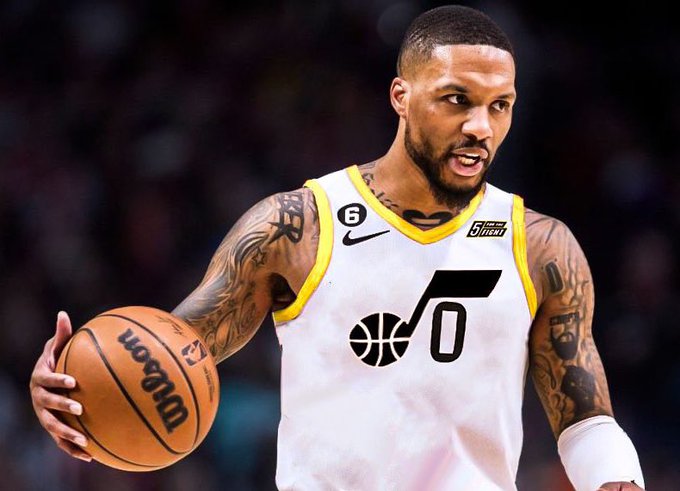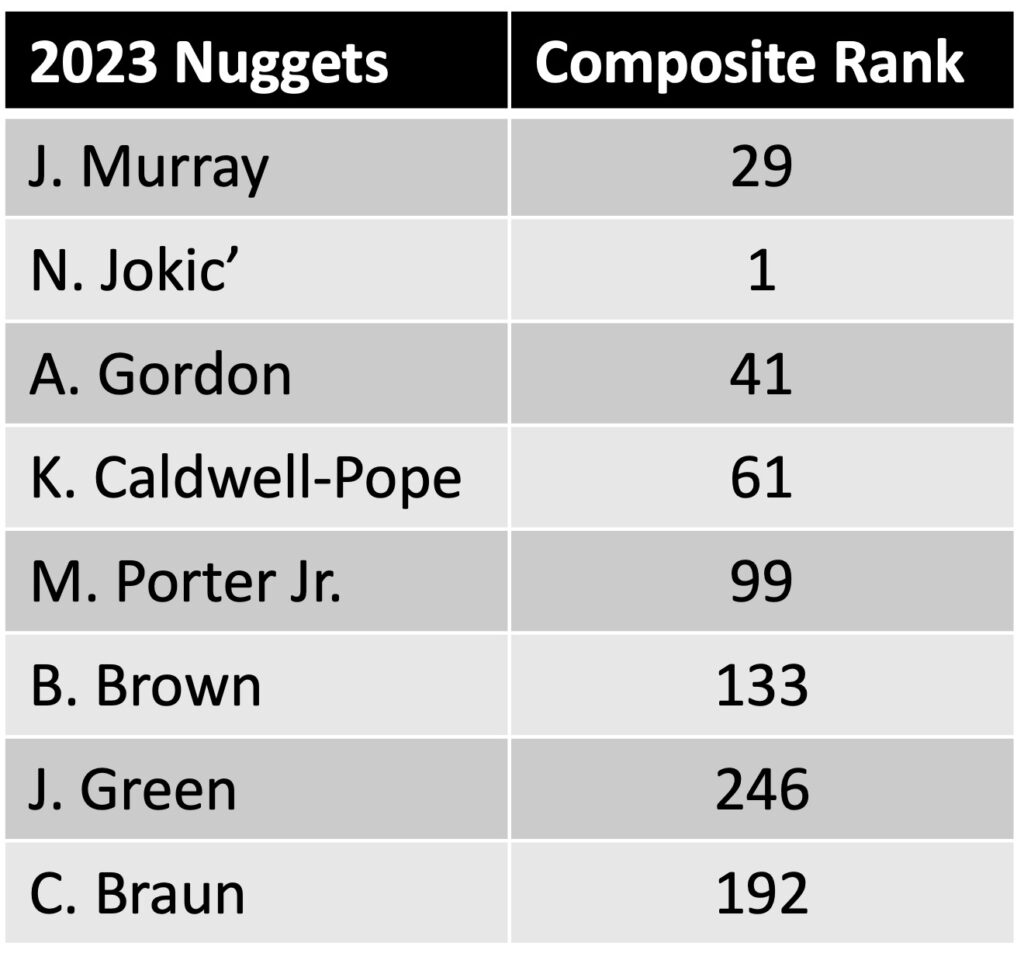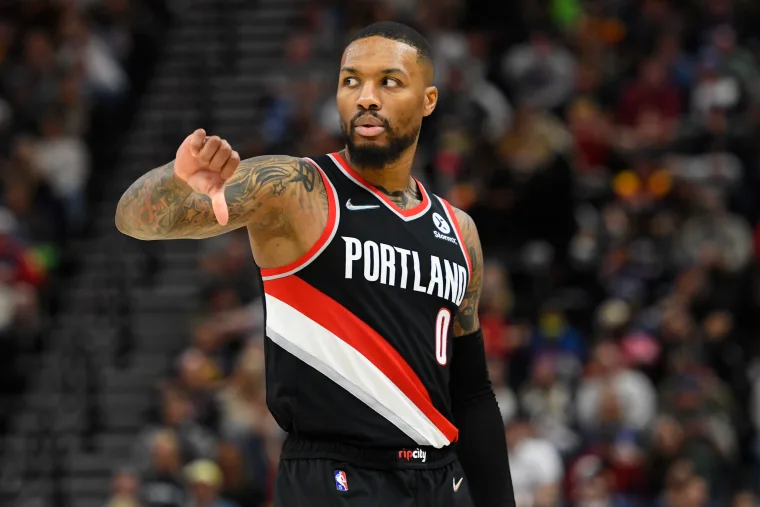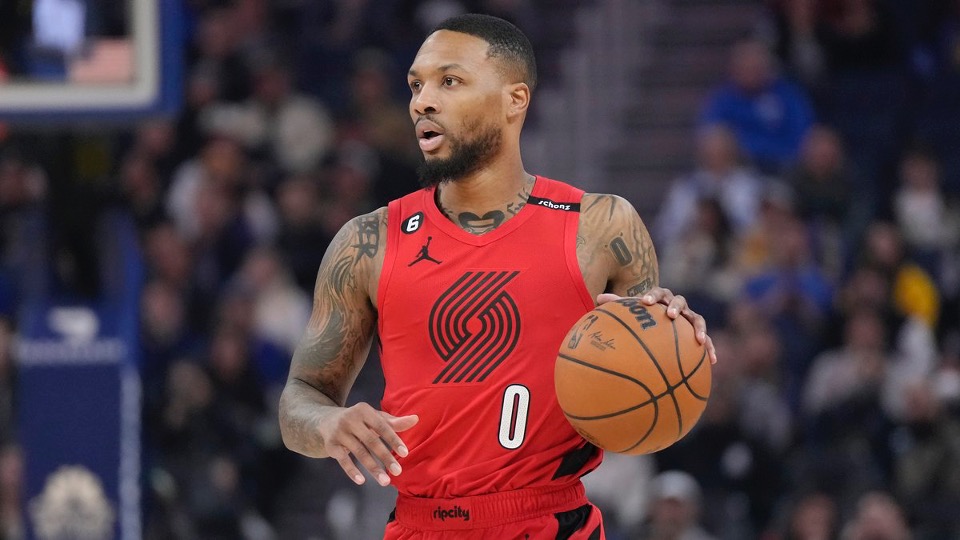Damian Lillard finally had enough. On July 1, one day into the NBA’s 2023 free agency, Lillard made his request to Blazer brass to be traded. He’d said for years he wanted to contend for a championship. Portland’s 2022-23 season was dismal. There was no clear path to improving the Blazer roster in free agency. Lillard decided he needed to go elsewhere.
The announcement caused a great stir in the NBA space-time continuum, including here in Jazzville where the request spawned more articles, blog posts, podcasts, and tweets than can be counted. Much of the local din was focused on fantasizing the return of Lillard, a Weber State product, to Utah, where some feel he would make the Jazz an instant contender.
But would he?
It’s been weeks now since the bomb went off. Portland has refused to bite on the paltry offerings from Lillard’s requested destination, the Miami Heat. There are other teams out there that can offer much more of what the Blazers want. The Jazz are one of those teams.
There’s been no smoke yet from the Jazz’ gun on a Lillard trade. But we know that anything can happen when Danny Ainge is at the wheel. The Jazz and their boat load of young-players and draft assets could put together an acceptable package for Lillard if they wanted to and it wouldn’t have to include their foundational pieces–Markkanen or Kessler. The Jazz could make this happen.
But would they? Should they?
Let’s take a look at both sides of the argument.
The Jazz should trade for Lillard – A brief from the defense
The Jazz should move now to acquire a top-10 player—Damian Lillard—to pair with a peaking Markkanen and the up-and-coming Walker Kessler. Such a trade, with some additional, doable lineup adjustments and player development would create a brief but real window of opportunity for the Jazz to compete for a championship.

To support this pro-trade argument, the defense examined what a championship contending team looks like and whether adding Damian Lillard would really raise the Jazz to contender level.
Exhibit A in this examination is a set of player rankings for the rosters of conference finalists (their top eight player rotation) for the last 5 years – that’s twenty conference finalist teams. Conference finalists were characterized by player rankings defined using a composite of 538’s Total RAPTOR score and Wins Above Replacement (WAR) value. RAPTOR (Robust Algorithm (using) Player Tracking (and) On/Off Ratings) measures the number of points a player contributes to team offense and team defense per 100 possessions, relative to a league-average player. The WAR metrics defines the number of wins a player adds to or subtracts from their team relative to a replacement-level player.

Here’s an example result for the Champion 2023 Denver Nuggets. The weighted average player ranking for the team is 90; which, as it turns out, is a poorer rank than the average conference finals team. But they have The Joker–currently the best player in the league, so no biggie.
There are a lot of ways to rank players and a lot of published player rankings. The 538 RAPTOR metric includes both offense and defense effectiveness and has shown some utility in predicting future player and team performance. Nothing is perfect, but we thought this a useful tool for our purpose, especially when combined with a player’s WAR value. If you need more info on these metrics, knock yourselves out at the 538 link above.
Here’s what we found out about recent NBA championship contending teams:
- You need a top-10 player leading your team – Of the 20 teams that reached the conference finals from 2019-23, Sixteen had at least one top-10 player. Nine of the ten teams that played in the NBA championship round from 2019-23 had at least one top-10 player. All five NBA champions from 2019-2023 had at least one top-10 player in their line up.
- You need multiple top-50 players in your line-up – Nineteen of the 20 teams competing in the conference championship round from 2019-23 had multiple top-50 players on the team. Fifteen teams had three or more top-50 players in the lineup. All five NBA champions from 2019 to 2023 had at least three top-50 players in their line up.
- You need top-100 depth (unless you’re the Lakers and you have LeBron and The Brow) – The average player ranking of the 20-conference finalist from 2019-23 (weighting the five starters over the three reserves) was 87.
The Jazz do not have a top-10 player on their roster. They likely do not have any player on the roster who will become a top-10 player. A probable Jazz 8-man rotation for this season would have a projected weighted average player ranking of 136… that’s a long way off from the contending team average of 87. The Jazz currently have no top 100 players on their roster other than Markkanen (27) and Kessler (49, I know… shocking he’s that high already). That’s why most of the betting outlets have the Jazz over-under for wins around 34 this season. In short, the Jazz look nothing like a high-level playoff team.
But what if they add Lillard?
The addition of Lillard, a top-5 ranked player last season, at point-guard , a position that Utah currently fills with sub-100 level players, would bring the Jazz into the skill-level range of a typical NBA contender. Not including any rookies, a probable eight-man rotation that includes Lillard would have an average player ranking of 114 and give the team three top-50 players—that’s a similar ranking to last year’s Lakers and Heat teams. An improvement of John Collins this season back to even his 2021-22 form moves the Jazz to an average player ranking of 96—and now we’re talking!
Numerics aside, a leap from a lottery team to contender by trading for Lillard makes sense conceptually. Lillard had one of his best seasons last year at age 32 and appears to have more in the tank. He’s a high-level floor general, an element the Jazz sorely lack right now. His likely two or three remaining years of high productivity will coincide with Markkanen’s prime years and provide a bridge of winning basketball while the Jazz’ new young talent and remaining future draftees mature.
The Jazz has never traded for, or signed as free agent, a top-10 player (no fans, Carlos Boozer was not a top-10 player). Top-10 players are incredibly hard to find–uhmmm, there’s only ten of them. Such a player is within the Jazz’ reach now. The Jazz should not let this opportunity slip by, irrespective of Lillard’s small window of remaining excellence. It’s now or probably never.
The Jazz should not trade for Damian Lillard – The prosecution cross examines
The Jazz should not give up young prospects nor big chunks or their wealth of future draft picks for Damian Lillard. Lillard’s is owed $216 million over the remaining 4 years of his contract. The contract would stifle the team’s ability to build on their young foundation beyond the addition of the aging all-star. A moon-shot trade for Lillard is too big of a risk for a very brief, uncertain, and likely underwhelming return.

Lillard never won it in Portland. Why would it be any different in Utah? Lillard has been in Portland since the 2012-13 season—11 years. The Blazers made it to the playoffs in eight of those 11 years… and impressive run. But Lillard led his team beyond the second round only once in that time. The prosecution grants that adding Lillard to the Jazz would make them a playoff team. But Lillard’s history in Portland gives no indication that “Dame Time” in Utah would yield a true contender.
Lillard’s contract is massive and would put the Jazz on the hook for over $58 million in 2025-26 and over $63 million in 2027-28. Lillard would be 37 in that final $63-million season. The contract is too long and too big. Lillard still has juice, but I wouldn’t bet on top-10 seasons beyond this year. Championship teams typically take time to gel, to season. The Jazz with Lillard don’t have that sort of time. The two years go by quickly with a few playoff-game victories and then you’re done, with an albatross of a contract around the team’s neck that they will be unable to move off of.
There are too many “ifs” in the defense’s argument… if Collins returns to form, if players improve, if Dame raises everybody’s boat through some magical osmosis, then it’ll all work this or next season. Nope, the Jazz should take a pass. It’s too unlikley that these planets align. Besides, Dame doesn’t want to be here anyway. He’d be back to pushing that rock up the hill like in Portland each season, only to see it roll back down.
The verdict please – Lower the Rim’s ruling
Order! Order in the court!
Well, the defense has made a heck of an argument. Although we find ourselves waffling, Lower the Rim rules in favor of the prosecution; the Jazz should not do the trade. The needle’s eye that the Jazz would be trying to push a championship thread through is just too small. The cost to the Jazz’ hard-won flexibility in team building for such a trade is just too great.
But we must say that we are not confident in our decision.
A sad fact was revealed by the defense’s research that reminds us how hard it is to predict success in the NBA. The 2020-21 Utah Jazz—you know, that team that logged the best regular season record in the league that year. That team had a better average player rating (per our RAPTOR/WAR metric) than all but one of the conference finalists we looked at. That 2020-21 Jazz team boasted 6 top-100 players, three top-25 players, and 1 top 10 player. The team’s eight-man rotation player ranking was 58–only Giannis’ 2019 Bucks were better at 50. That Jazz team looked like a contender. Indeed, the 2020-21 team looked like a championship team. But they weren’t—they bombed out in the second round.
You just never know what’s going to happen.
Thats also the case with this Jazz off season—you just never know. Ainge might surprise everybody and pull the trigger on Lillard. And if he did… we wouldn’t be terribly upset.
